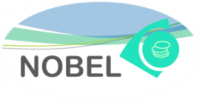Applying a multi-actor approach, NOBEL will involve service providers (forest owners, managers, decision-makers) and consumers (private households, representatives from companies and government) in the assessment of monetary values of a multitude of ecosystem services. NOBEL will analyse the options and challenges for ES provisioning at different spatial scales (EU, national, regional to local). The work is organized in six workpackages:
- WP 1 | Geographic information and auction platform (Lead: NMBU)
- WP 2 | Communication and interaction with stakeholders (Lead: INRAE)
- WP 3 | Methods and models to assess forest ecosystem services (Lead TUM)
- WP 4 | Analysis of the political framework for of forest ecosystem services (Lead BOKU)
- WP 5 | Demonstration of business models for provision of forest ecosystem services (Lead CTFC)
- WP 6 | Management and Coordination (Lead: BOKU)

The different ecosystem services (ES) and existing approaches to quantify the level of ES provisioning (e.g. use of indicator sets, value coefficients) will be screened according to existing frameworks (MA, TEEP, CICES). NOBEL will screen existing data sources for their potential to map the ES with spatial modelling approaches. The maps will allow picturing the current level of different forest ecosystem services (e.g provisioning, supporting ES) and the capacity to provide the ES in the biogeographic regions in Europe. NOBEL will explore the different spatial information requirements for the development of business models and innovative policies for ES. In this context we will build on existing open source technologies, open source data and case studies from ongoing initiatives. This will support the development of business models and innovative policies. On this basis, various optimization approaches will suggest advantageous forest composition (tree species and stand types) for improving the provisioning of ES and the resilience of ES delivery. From the analysis it will be possible to link the ES maps with the existing socio-economic and political conditions in Europe. NOBEL will analyze the management practices needed to provide specific levels of ES provisioning on European level considering different owner types, eco-regions and management regimes and quantify the costs for providing specific levels of ecosystem services. Business models allow service providers and consumers of forest ES to interact in different ways and by various platforms. In NOBEL four different kind of new business models will be considered. In implementing these business models, alternative mechanisms for the payments will be explored.

Five pilot demonstrations will provide a typical combination of relevant ecosystem services and business models under the given socio-economic and ecological conditions in different European landscapes (Mediterranean, Central and Eastern Europe, Alpine, Boreal). For the evaluation of non-excludable services (e.g. carbon, biodiversity) and common-pool resources (e.g., recreation, protection), the supplier’s price for different services will be derived based on the concept of opportunity costs as an income-loss for the provisioning of these services for ecosystem managers (service providers) and the price for selling these services. This approach will address an appropriate premium (producer surplus plus risk premium) to design attractive prices, which are most likely acceptable for ES providers. The latter analyses the economic implications of favoring ES-based adapted management strategies for land owners. The comparison of the estimated price by cost and preference (e.g. willingness to pay) based approaches and the payments people are indeed willing to make will allow to draw conclusions on feasibility, effectiveness and other implications for policy making.
